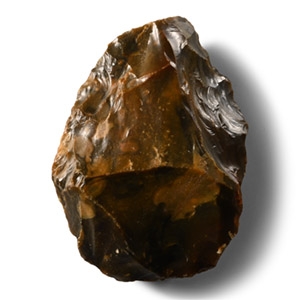Home > Auctions > 3 - 8 September 2024
Ancient Art, Antiquities, Natural History & Coins
Auction Highlights:
From the Gorovits family collection, since at least the 1940s.
Private collection, London.
Accompanied by an academic report by Dr Raffaele D’Amato.
This lot has been checked against the Interpol Database of stolen works of art and is accompanied by search certificate number no. 17178-221462.
Cf. similar elements in Melyukova, A.I., Stepi evropeĭskoy chasti SSSR v skifo-sarmatskoe vremya (Steppes of the European part of the USSR in the Scythian-Sarmatian Period, in Russian), Moscow, 1989; Leskov, A.M., Grabschätze der Adygeen, Munich, 1990; Galanina, L.K., Die Kurgane von Kelermes:“Königsgräber” der frühskythischen Zeit, Moscow, 1997; Kantorovich, A.R., Erlich, V.R., Bronze Molding Art from Adygeian Kurgans, VIII-III centuries B.C., Moscow, 2006, cat.103,105,122; Galanina, L.K., ‘Horse equipment from the collection of Elizabethan antiquities stored in the State Hermitage (excavations of N.I. Veselovsky in years 1914, 1915, 1917, in Russian)’ in АСГЭ. Вып.38. Санкт-Петербург: Государственный Эрмитаж, Saint Petersburg, 2010, pp.107-122.
Bronze open-worked frontlets like this one were found with horses in the Barrow-mound no.5 of the Ulyap burial-ground in the Kuban basin, and their secure dating to the 4th century B.C. was established by the Thasian amphoras found in the respective graves (nn. 14-15-21, see Leskov, 1990, figs.180,183). The incised decoration of the chamfron finds various parallels both on frontlets from Barrow-Mounds nos. 4/1913 and 4/1917 near Elizavetinskaya Kossack-Village, in Kuban Basin, and from Gyuenos in Abkhazia (Galanina, 2010, pl.7,12). The piece belongs to a rare type of chamfron, known only from finds in the Scythian and Meotian burials of 5th-4th centuries B.C.
German art market.
European private collection, 1970s-early 2000s.
Acquired from the above; thence by descent.
Private collection, London, UK.
Accompanied by an academic report by Dr Raffaele D'Amato.
This lot has been checked against the Interpol Database of stolen works of art and is accompanied by a search certificate number no.12284-221444.
Cf. Denwood, P., Archaeology in Asia, volume 7, University of London, June 27-29, London, 1977, p.106, no.138; Ettinghausen, R., Das Pferd in der Orientalischen Kunst in Du: das Kulturmagazin, Bd.6, Zurich, 1978, pp.64-73; Muscarella, O.W., Bronze and Iron: Ancient Near Eastern Artifacts in The Metropolitan Museum of Art, New York, 1988, p.439, no.584.
Many bronze belt fittings of this type are in the collection of the Metropolitan Museum of Art, New York, (Muscarella, 1988, items 581-4). Muscarella (p.440) notes that a total of 181 were known at the time of his publication (1988).
From a collection acquired on the UK art market from various auction houses and collections mostly before 2000.
From an important Cambridgeshire estate; thence by descent.
Accompanied by an academic report by Dr Raffaele D’Amato.
This lot has been checked against the Interpol Database of stolen works of art and is accompanied by search certificate number no.12159-217186.
Cf. Morris, D., The Art of Ancient Cyprus, Oxford, 1985, figs.108-109, p.119, for similar idols; Various, Idoles, Au commencement etait l’image, A la Reine Margot, 22 Novembre 1990-28 Fevrier 1991, Paris, 1990, figs.10-11, for similar; also see the view of Caldwell, Duncan, The Use of Animals in Birth Protection Rituals and Possible Uses of Stone Figurines from the Central Sahel, 2015 winter issue, vol.48, no.4, Nov., pp.14-25.
Most scholars consider these as symbols of the fertility cult and as evidence of the existence of a matriarchal society as a form of organisation of the earliest human society. The people of the Stone Age may have considered figures such as this to represent women and mothers with their life-giving powers, or as depictions of the ancestors.
From a collection acquired on the UK art market from various auction houses and collections mostly before 2000.
From an important Cambridgeshire estate; thence by descent.
Accompanied by an academic report by Dr Raffaele D’Amato.
Cf. Morris, D., The Art of Ancient Cyprus, Oxford, 1985, fig.342, p.212, for a similar idol; Various, Idoles, au commencement était l’image – 22 Novembre 1990 – 28 Février 1991, Paris, 1990, fig.11, for a Neolithic sculpture in similar style; Nanoglou, S., ‘Representation of Humans and Animals in Greece and the Balkans during the Earlier Neolithic’ in Cambridge Archaeological Journal, 18, 2008, pp. 1-13, fig.3, nos.2-7, and fig. 6, for similar; also see the view of Caldwell, Duncan, The Use of Animals in Birth Protection Rituals and Possible Uses of Stone Figurines from the Central Sahel, 2015 winter issue, vol.48, no.4, Nov., pp.14-25.
Animal figurines seem to be a recurring feature in the earlier Neolithic settlements, in the Balkans and in the Levant. It is significant that in the Neolithic Mediterranean the depicted animals seem to be domesticated, thus suggesting that its reference points were within the confines of the community.
Found continental Europe.
Ex Victor Brox collection, UK, formed during the 1980s-1990s.
From the collection of a South West London, UK, specialist Stone Age collector.
Cf. Evans, J., The Ancient Stone Implements, Weapons and Ornaments of Great Britain, London, 1897, item 37.
Preforms such as this unusually large and undamaged example were widely traded during Neolithic times and were a valuable commodity in communities which lacked suitable material for stone tool production. There has been research showing signs of wear from rubbing against cloth, suggesting that they might have been carried over long distances.
LOWER PALAEOLITHIC PERIOD, CIRCA 450,000-250,000 YEARS B.P.
Found St Meme, France.
Acquired on the UK art market in the 1970s.
From the collection of famous UK musician and amateur archaeologist, Victor Brox (1941-2023), formed in the 1980s-1990s.
From the private collection of an East Anglian, UK, collector.
From the collection of Jean-Claude Debenne (1936-2020), an amateur prehistorian and former member of the French Society of Prehistory and the Prehistoric Association of the South-West, as well as an Honorary Member of the Geological Club of Ile-de-France.
This collection of flints was assembled between the 1950s and 1990s and originates from Ile-de-France, Oise, and Val-d'Oise.
Cf. MacGregor, A. (ed.), Antiquities from Europe and the Near East in the Collection of Lord McAlpine of West Green, Oxford, 1987, item 1.9, for type.
From the collection of Jean-Claude Debenne (1936-2020), an amateur prehistorian and former member of the French Society of Prehistory and the Prehistoric Association of the South-West, as well as an Honorary Member of the Geological Club of Ile-de-France.
This collection of flints was assembled between the 1950s and 1990s and originates from Ile-de-France, Oise, and Val-d'Oise.
Cf. MacGregor, A. (ed.), Antiquities from Europe and the Near East in the Collection of Lord McAlpine of West Green, Oxford, 1987, item 1.3. for type.
From a collection acquired on the UK art market from various auction houses and collections mostly before 2000.
From an important Cambridgeshire estate; thence by descent.
Cf. MacGregor, A., (ed.) Antiquities from Europe and the Near East in the Collection of Lord MacAlpine of West Green, Oxford, 1987, item 5.10.
From the collection of Jean-Claude Debenne (1936-2020), an amateur prehistorian and former member of the French Society of Prehistory and the Prehistoric Association of the South-West, as well as an Honorary Member of the Geological Club of Ile-de-France.
This collection of flints was assembled between the 1950s and 1990s and originates from Ile-de-France, Oise, and Val-d'Oise.
Cf. MacGregor, A. (ed.), Antiquities from Europe and the Near East in the Collection of Lord McAlpine of West Green, Oxford, 1987, items 1.10, 1.11, for type.
Formerly in the collection of Lars Otto Johan Holst (1863-1936), a veterinary surgeon who was active in Ronneby, southern Sweden from around 1887. with Skanes Auktionsverk, 31 May 2014, no. 464 [Part].
Cf. MacGregor, A., (ed.) Antiquities from Europe and the Near East in the Collection of Lord McAlpine of West Green, Oxford, 1987, item 4.197, for type.
From a collection acquired on the UK art market from various auction houses and collections mostly before 2000.
From an important Cambridgeshire estate; thence by descent.
Cf. MacGregor, A. (ed.), Antiquities from Europe and the Near East in the Collection of Lord MacAlpine of West Green, Oxford, 1987, item 4.178, for type.
169 - 180 of 3369 LOTS

.jpg)

.jpg)
.jpg)
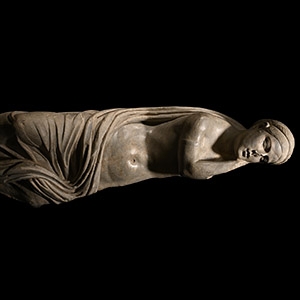
.jpg)
.jpg)






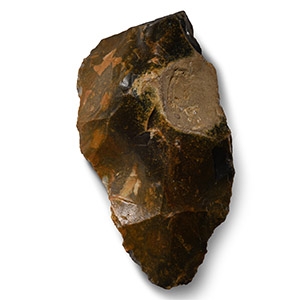
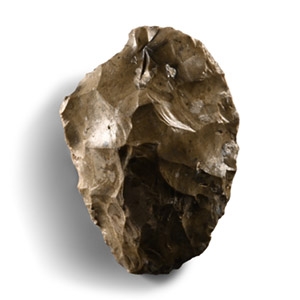
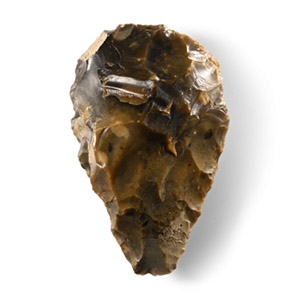
.jpg)
